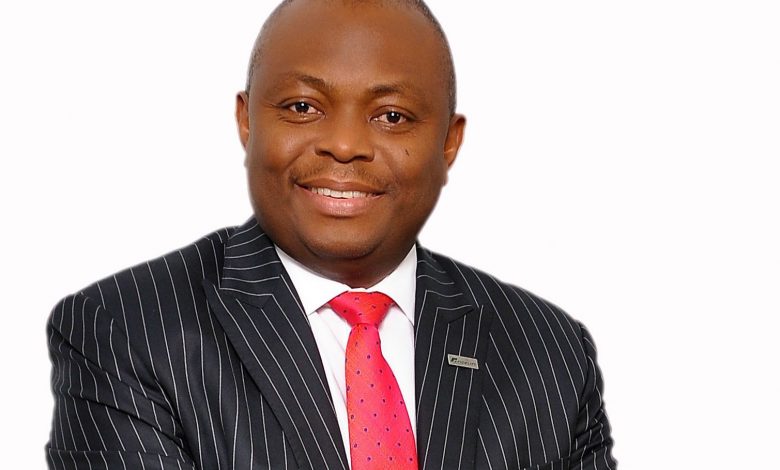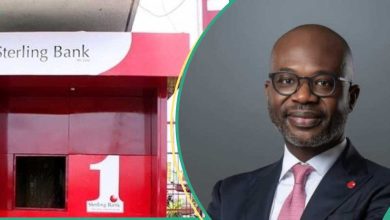FIDELITY BANK :THE POWER OF RETAIL BANKING

Michael Lafferty, Chairman of the Lafferty Group, is one of the business luminaries with deep wealth of experience;his words of wisdom and professionalism in the financial industry are rarely toyed with by professionals across the globe. At one of such occasions he described retail banking “ the foundation on which global banks are built” .He further noted that the world’s biggest banks built their financial empire from the mass market.
But Lafferty may not be alone in that thinking. Nnamdi Okonkwo, Chief Executive Officer, Fidelity Bank Plc is equally an apostle of that that wisdom. For sometimes now, he has focused on that segment of the market and has been handsomely rewarded.
He has continued to leverage the value from retail and digital banking. In the second quarter results for 2020 he came out with strong double-digit growth in Deposits, and Profitability demonstrating the power of retail banking. The bank delivered an impressive profit before tax of N11.96 billions in the first half of 2020 , a 22 percent growth from N9.81 billions recorded in the corresponding period of 2019 .This is in spiteof a marginal growth of 2 percent in gross earnings during the period. Analysts believed the above feat is a proof that with a deft application of experience and relevant skills it is not what you make that matters but what you make out of it .Another beauty of the bank half year report is its ability to maintain a sound asset quality with its risk outlook staying within the regulatory framework of 5 percent at 4.8 percent.
Definitely, the result was no accident but a result of focus and discipline on how the bank harnessed the potential of its balance sheet, focusing attention to chosen business segments and determined execution of its retail and digital banking strategy.In search of a competitive strategy a critical decision by the captains of industries is to examine the fundamental choices of the bases available by which competitive advantages in the markets might be achieved and sustained. Looking at the three business segments that delivered the fortunes of Fidelity Bank in the last few years ,one can confirm that out of the strategic directions chosen, the retail banking has been the cash cow . However ,the corporate and investment backings also played critical roles but the figures confirmed the retail segment appeared to be where mother lode was located with strong competitive advantage in last two years .. Retail banking segment delivered 46 percent of the bank gross earnings of N105,753 billions in the first half of 2020 and 42.3 percent in the corresponding period of June 2019 out of the total N103,655 billions gathered ; it contributed 58.8 percent and 58.9 percent of its profit after tax and profits before tax of the half year results respectively .
In absolute term profit after tax moved from N11,963 billions to N11,303 billions between the two periods while in 2019 profit before tax stood at N9,812 billion and N8,498 billions after tax out of which the retail banking delivered 64 % at pre and post tax levels .The retail segment contributed N6,285 billions and N5,444 billions to the pre and post tax figures stated above in absolute term. .Furthermore, its contribution to interest income within the period under review was 42.7 percent and 41 percent between 2020 and 2019 respectively. It contributed N39,457 billions of the N87,622 billions total interest income in the half year 2020 and N35,227 billions out of the total figure of N85,830 billions in the half year 2019 .Under the fees and commissions income segment, the bank retail banking contributed 80 percent out of the total N9,535 billions total income with N7,666 billions; the total amount of N5,679 billions raked in from the retail banking market segment out of the total N6,771 billions net fees and commissions also translated to 83.8 percent. From the above analysis the retail banking palpably contributed the highest to both bottom and top lines of Fidelity Bank Plc in the first half of 2020 .The retail banking segment ,however, was followed by the corporate banking in terms of revenue generation and profitability. The investment banking has been lethargic in its contribution to the fortunes of the bank . Rather ,the investment banking appeared to be a spoiler in the bank income streams with higher cost from that department without proportionate revenue to justify it . In the bank half year results in 2020 it contributed 56.8 percent and 65percent of the total interest expenses in 2020 and 2019 respectively on the back of absolute figures of N22,325billions and N31,794 billions between the two periods . This was in spite of the fact that its contributions to the bottom and top lines were meagre . Its share of the total profit after tax and profit before tax in the first half of 2020 were N1,274 billions and N1,324 respectively out of a total of N11,303 billions and N11,963 billions respectively. In the corresponding period of 2019 , the investment banking contributed a meagre amount of N693 millions of the total absolute figure of N8,498 billions profit after tax. Even where the investment banking income segment is expected to show power in fees and commissions, it contributed N412 millions from a total of N9,535 billions in gross fees and commissions while the retail banking attracted N7,666billion ,a 80 percent package .
Retail banking is fundamental to any bank looking to be a force, or preserve its going-concern status in this critically competitive economic environment. It has been the subject of immense research in the last decade, with many banks devising strategies to acquire a large chunk of the market share in this business segment. The banking landscape is evolving amidst growing competition, such that a bank that generally does well in its retail banking segment, is perceived as strong by the public.
The power of retail banking, indeed , delivered critical mass in the first half year 2020 beating the odds .Despite the slowdown in economic activities in H1 2020 (especially in Q2), the bank recorded an increase in deposits from customers. Deposits from customers rose to +28.16% in H1 2020. Its deposits from customers increased from N1.097trn in H1 2019 to N1,405.95bn. The growth in deposits was strong across all deposit products. Local currency deposits were N1.11trn representing 76.1% of total deposits while foreign currency deposits increased by 4.2 % to N300.8bn which accounts for 21.4% of total deposits. The power of this bank retail banking was palpable in its savings department. Savings deposits increased by 32.2 % YTD to N363.9bn from N275.2bn in 2019FY which accounts for 25.9% of total deposits from 22.5% in 2019FY. Savings was also a major reason for the growth in total deposits.
But the management led by Okonkwo’s savvy is not limited to retail bank as a strategic direction, in the core banking or maturity transformation, he has a large heart for riskwithout compromising safety .
Loans to customers rose in H1 2020 by 20.99 % YY-o-Y. Its loan to customers rose from N999.32bn in H1 2019 to N1,209.1bn in H1 2020, while it’s net loan book bumped by 7.3 % YTD to N1,209.1bn from N1,127.0bn in 2019FY.
Yet the bank’s NPL ratio dropped slightly in H1 2020. Its NPL ratio declined from 5.4% in H1 2019 to 4.8% in H1 2020. This is within the regulatory minimum of 5 percent Analysts attribute its relatively low NPLs to the early identification of sectors likely to be adversely affected by the coronavirus pandemic and economic lockdowns. Foreign currency NPL accounted for 11.5% of total the bank’s total NPLs which was largely in the downstream oil & gas and transport .As we have communicated to the market, we will continue to focus on redesigning our systems and processes to enhance service delivery, deepen our cost optimization initiatives to reduce operating expenses and cost-to-serve and enhance our overall risk monitoring capacities to ensure both internal and external risks are identified and mitigated before they crystallize”.
In line with our digitization drive, we will continue to push for the adoption and migration of customers to our digital platforms and increase our retail banking market share through innovative products and services. Leveraging on our robust electronic banking processes and products we will continue to deepen our play in the retail and commercial markets, Small AND Medium Scale Enterprises (SMEs) sectors”.







